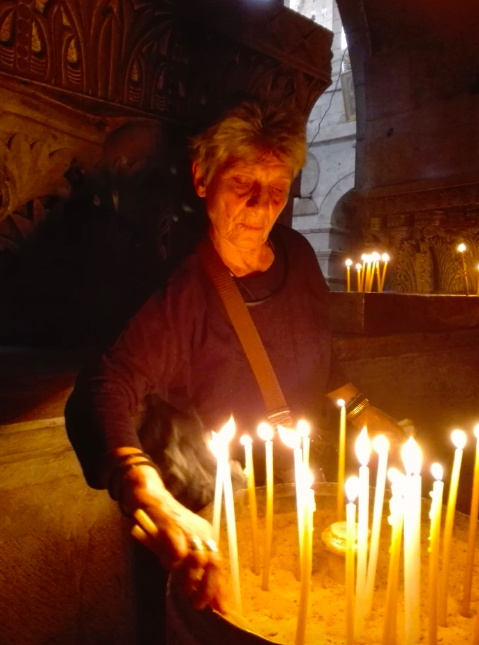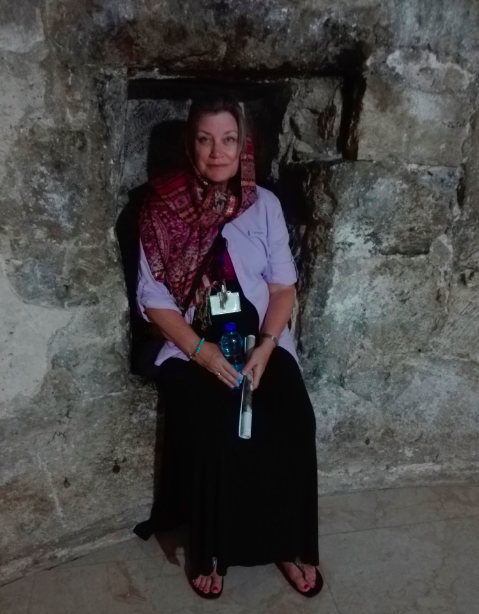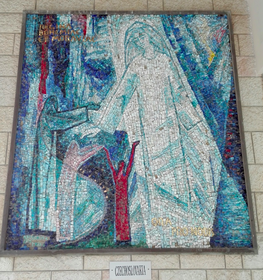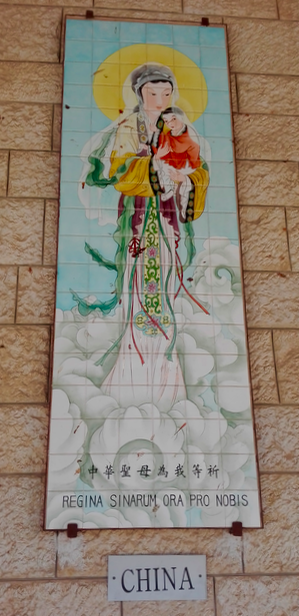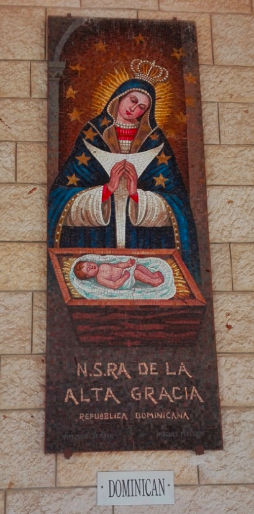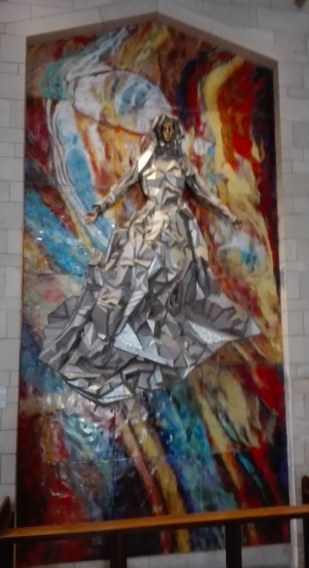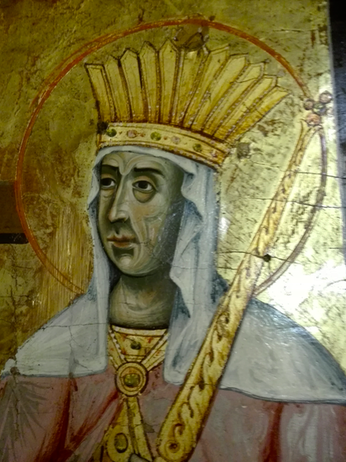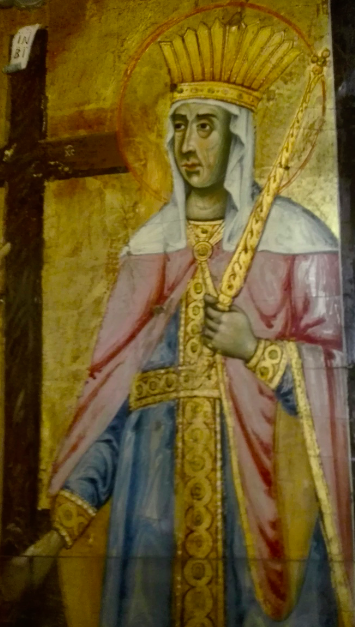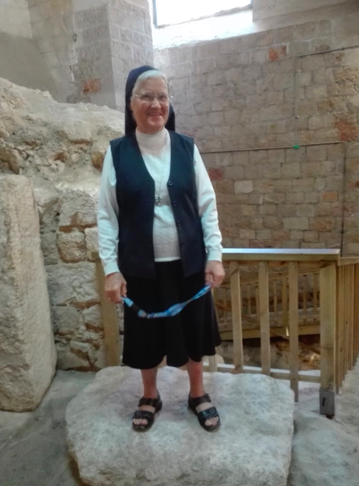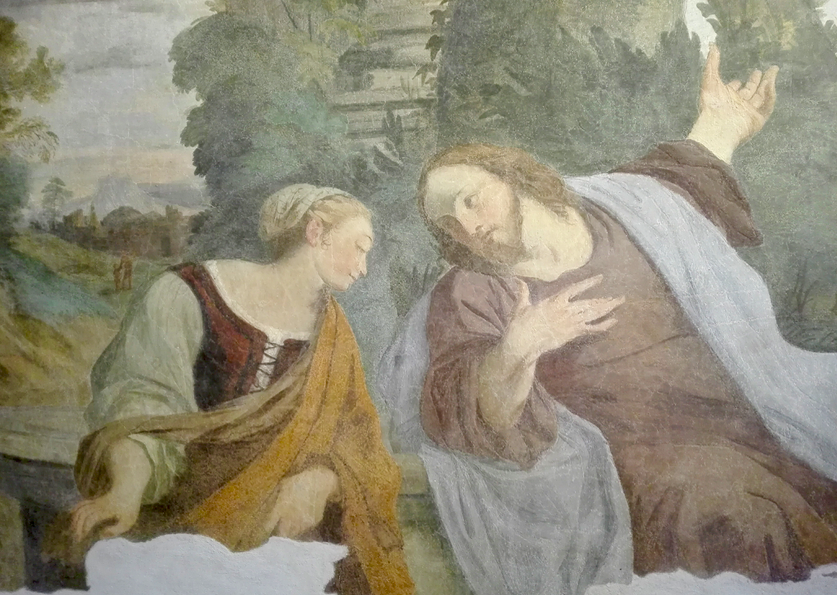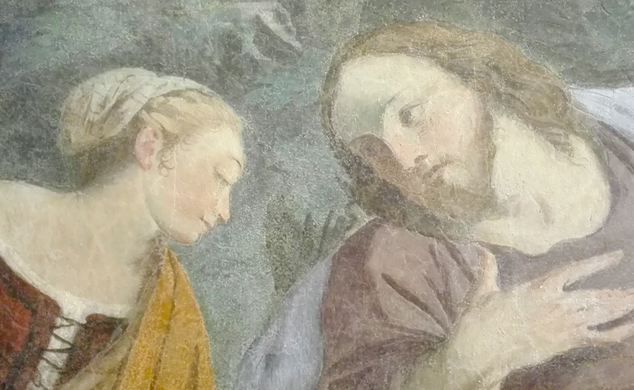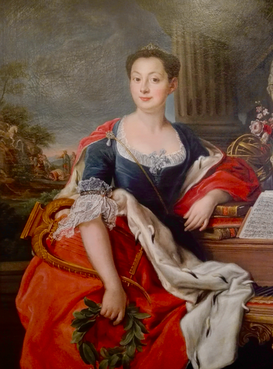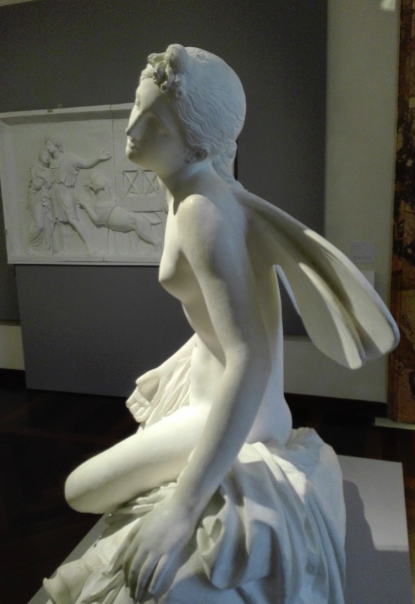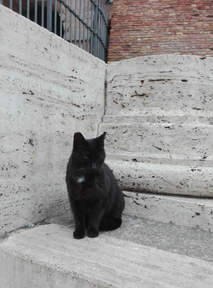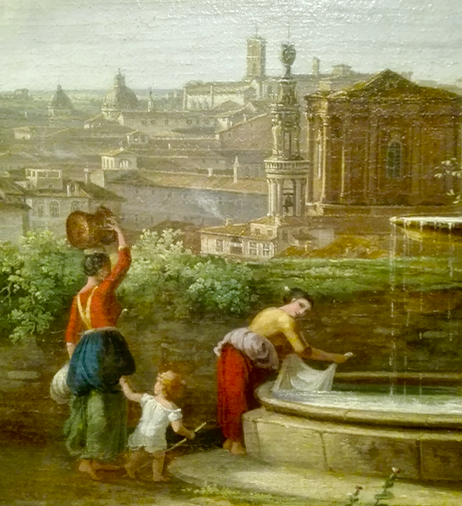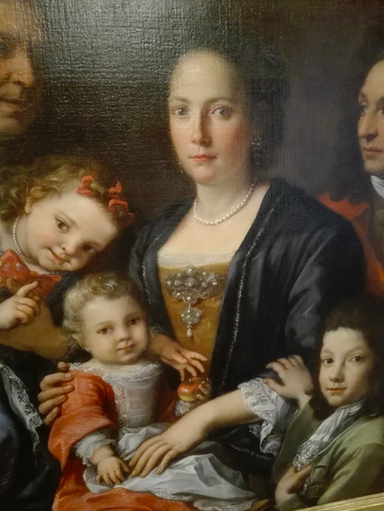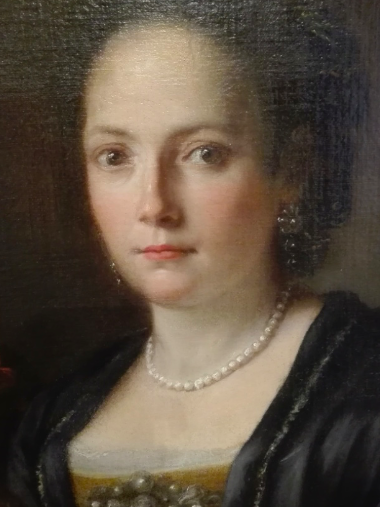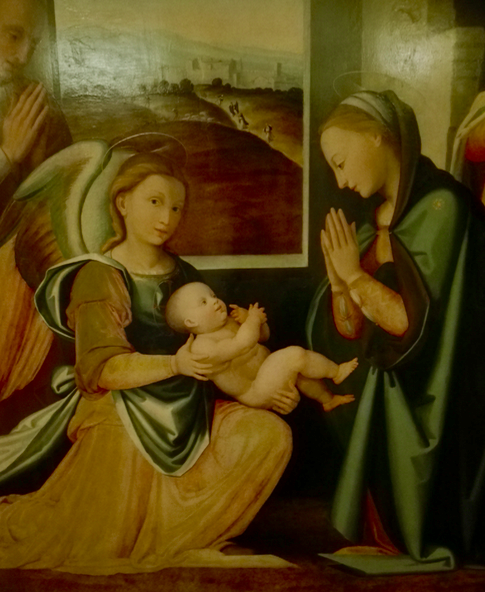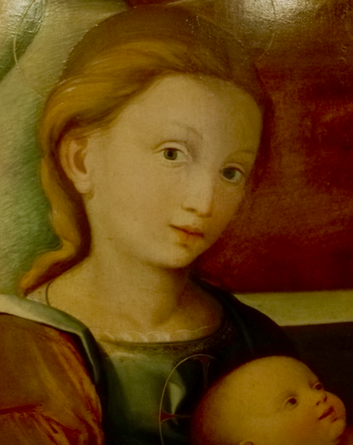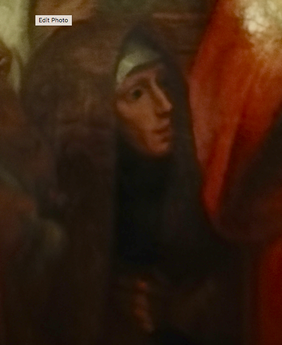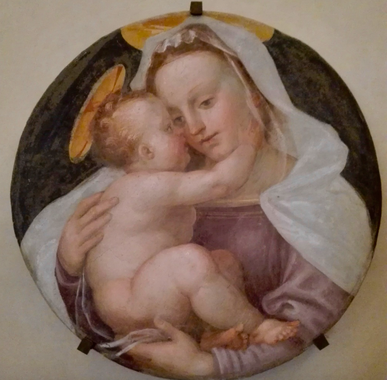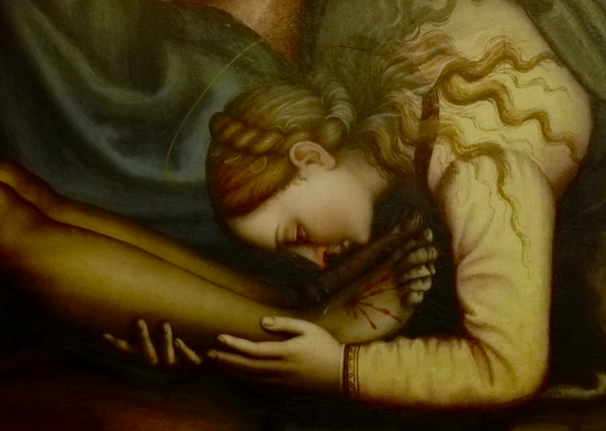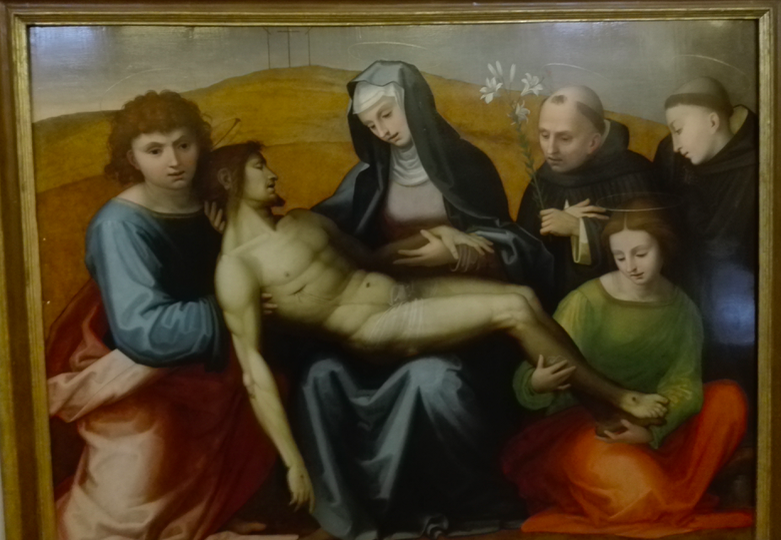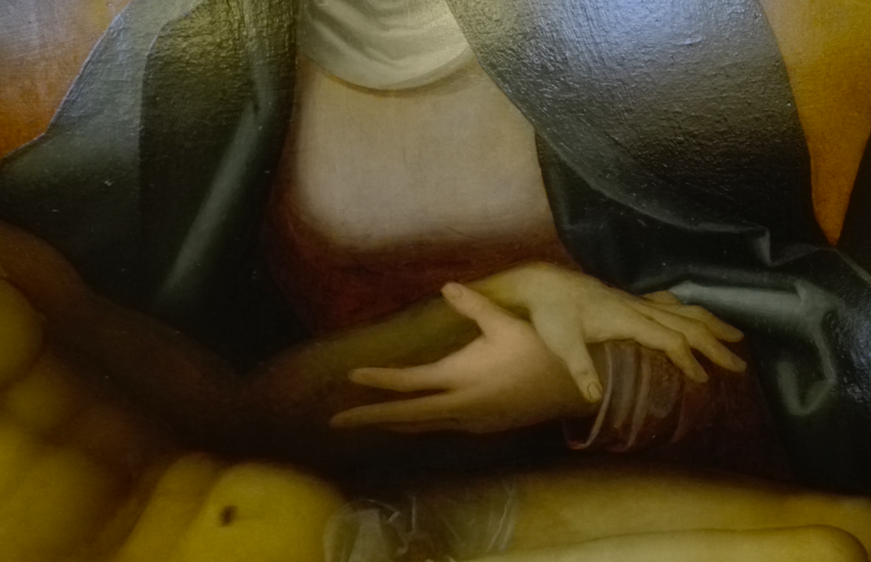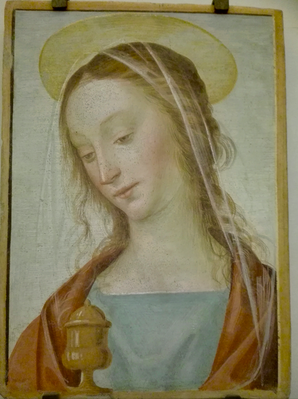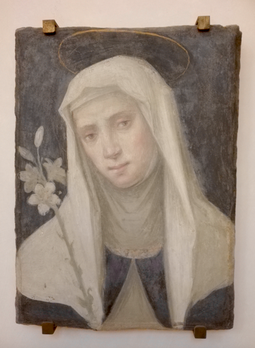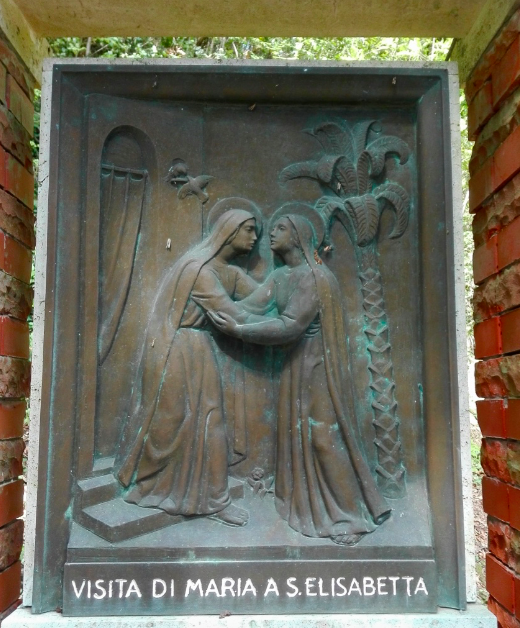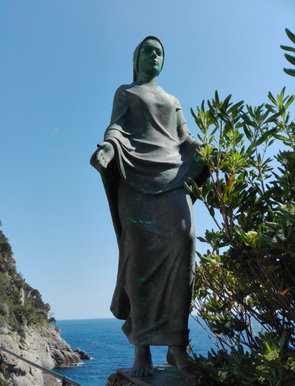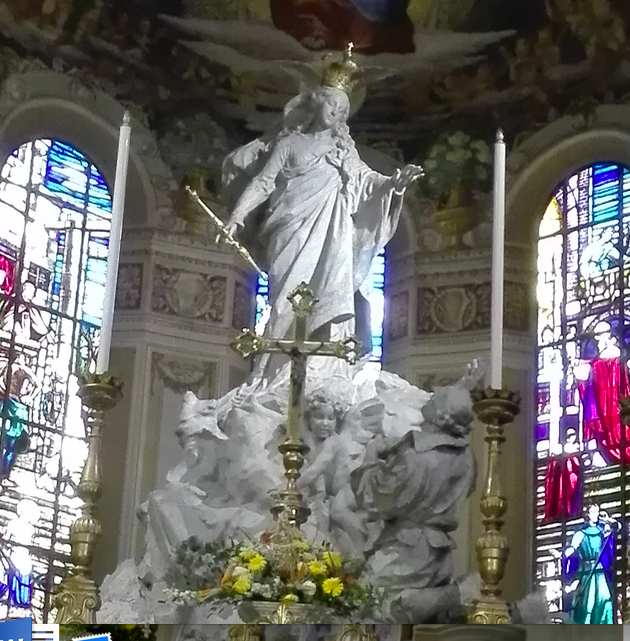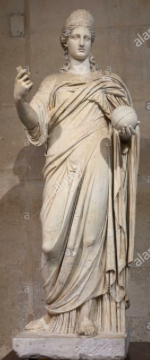Lovely Ladies
On this page I want to introduce you to some of the "lovely ladies" I met on my trip. I've chosen each one for what she asks of me, and how I might carry her in who I am. (I'll add new ones into the top, so start reading from the bottom)
Israel
|
The Candle Lady in The Church of the Holy Sepulcher
This woman ‘worked the candles’ in the upstairs chapel where you can reach down and touch the rock into which the cross of Christ stood (I hear you saying ‘yeah right’, but it actually is the rocky area where the crucifixions happened, so it’s pretty close). After you queue in a human squash you file past the rock, bend down under a table to touch the very top of it. Then you come out into the chapel and you can light a candle. It is all astonishingly atmospheric, despite scaffolding and crowds. Anyway, this woman was keeping the candles tidy, gathering up burned ones, putting the burning ones into neat lines, making sure no one did anything they’re not allowed to do. I was drawn to her partly because of the light, the atmosphere, the space. But mostly because of her intensity of focus. She was there to care for the candles and that’s what she was doing. She was there to manage the worship space. I know what that’s about. The chapel of Calvary is run by the Greek Orthodox, so this was an elderly Greek lady. Isn’t her face a picture. |
St Helena
An intriguing and important player in the history is Israel is St Helena. Most of the pilgrimage sites that we visited (and many more besides) have a modern church built over a Crusader church built over a Byzantine church built around the actual Biblical spot. The Byzantine churches, built in the 4th century, honoured and preserved the rock or well or tomb or whatever. They were mostly circular, with a simple dome, intimate spaces for worship. The fascinating thing about many of these original 4th century churches is that they were commissioned and paid for by a woman, St Helena, the mother of Emperor Constantine. So what is an emperor’s mum doing wandering around Palestine with loads of cash??
It is worth hearing her story. In the year 270 Helena was a young woman working as a barmaid in a coastal town near modern-day Istanbul when an up-and-coming officer (by the name of Constantium, from modern-day Kosovo) in the Roman army fell in love with her. They had a child, called Constantine. The Roman officer rose through the ranks of the Roman army, so much so that he became Caesar in 293. At that time a Caesar was 2IC to the Augustus; Constantium was Caesar to Augustus Maximian. In his ambition for the job he ditched Helena a few years before this in order to marry Maximian’s daughter. After Constantium died in 306 (he had just one year in the top job as Augustus, mostly spent attacking our British ancestors!) Constantine was made emperor. At least, one of the emperors; it seems there were other emperors and it took him till 325 to win through as The Emperor of the entire Roman Empire.
You will know that he converted to Christianity; or at least, Christianity became his religion of choice, possibly for political reasons. Who knows. But we do know that his mother Helena became a Christian heart and soul. After Constantine’s ultimate victory in 325 he gave her the title of ‘Augusta’, and agreed to her request. She was an old lady, 76 years old, when she set off for Palestine. She took with her an open cheque-book from the Emperor and as much man-power as she wanted. What she wanted was to find the cross of Jesus. What she achieved in the next two years was the building of dozens of churches at places of significance for Christian story. She did find the cross (well she found 3 crosses and figured that the one that healed a dying woman was the True one!), and the places where she chose to build churches have been proven by modern archaeology to be pretty accurate historical sites. Which tells me that she quickly won the respect and confidence of the local Christian communities, and that the local churches had preserved an accurate collective memory of where things happened.
You have to remember that Christianity had been banned up until then. Church buildings were illegal. Every Emperor prior to Constantine had wanted to be the object of everyone’s worship. It must have been a bizarre thing for a woman to arrive, representing the Emperor, insisting that churches be built rather than destroyed, and that Christ be worshipped rather than her son. And paying for it, what is more!
The Byzantine Empire lasted for another millennia,though not in Palestine. The churches Helena built were enlarged and made more elaborate over the centuries, though many were destroyed by Islamic invasions. When the Crusaders arrived the Byzantine churches that remained became crypts under their enormous tall churches. So, somehow, miraculously, it is still possible to stand, 1700 years later, in the simple cave-like spaces that Helena had built to honour and preserve the spots where Jesus (and his mother) stood.
It may just be the particular places that we visited on our tour, but I wonder if Helena was more interested in the women in the Biblical story than the men. There are ancient churches on the site where Mary met the angel, where Mary met Elizabeth, where the Samaritan woman met Jesus, where Mary was buried. Obviously this wasn’t Helena’s interest alone, this has been quite a theme in church history, but being there, seeing the art and the buildings dedicated to the women, depicting the women, was quite surprising to my Protestant sensibilities. How did we ever become a patriarchal church? Some scholars argue that one significant impact of the early church was to uphold the status of women. Christian communities married later, didn’t kill the girl babies, women lived longer.
I love the image of 77-year-old Helena, Turkish barmaid turned Empress, digging around in the rocks on the hill-top near Bethlehem, herself imaging the meeting of the two pregnant women, Mary and Elizabeth, and building a church there in that very place. She must have been quite a character.
What kind of young woman wins the heart of one of the most ambitious men in human history? What kind of woman sustains the love and respect of a son, who though just as ambitious as his father brought greater creativity and competence to his leadership? How did she carry herself with integrity and personality in the halls of power (utterly ruthless power!) in which she lived? How did she come to faith in Jesus Christ? I wonder if her faith meant to her anything like what my faith means to me.
An intriguing and important player in the history is Israel is St Helena. Most of the pilgrimage sites that we visited (and many more besides) have a modern church built over a Crusader church built over a Byzantine church built around the actual Biblical spot. The Byzantine churches, built in the 4th century, honoured and preserved the rock or well or tomb or whatever. They were mostly circular, with a simple dome, intimate spaces for worship. The fascinating thing about many of these original 4th century churches is that they were commissioned and paid for by a woman, St Helena, the mother of Emperor Constantine. So what is an emperor’s mum doing wandering around Palestine with loads of cash??
It is worth hearing her story. In the year 270 Helena was a young woman working as a barmaid in a coastal town near modern-day Istanbul when an up-and-coming officer (by the name of Constantium, from modern-day Kosovo) in the Roman army fell in love with her. They had a child, called Constantine. The Roman officer rose through the ranks of the Roman army, so much so that he became Caesar in 293. At that time a Caesar was 2IC to the Augustus; Constantium was Caesar to Augustus Maximian. In his ambition for the job he ditched Helena a few years before this in order to marry Maximian’s daughter. After Constantium died in 306 (he had just one year in the top job as Augustus, mostly spent attacking our British ancestors!) Constantine was made emperor. At least, one of the emperors; it seems there were other emperors and it took him till 325 to win through as The Emperor of the entire Roman Empire.
You will know that he converted to Christianity; or at least, Christianity became his religion of choice, possibly for political reasons. Who knows. But we do know that his mother Helena became a Christian heart and soul. After Constantine’s ultimate victory in 325 he gave her the title of ‘Augusta’, and agreed to her request. She was an old lady, 76 years old, when she set off for Palestine. She took with her an open cheque-book from the Emperor and as much man-power as she wanted. What she wanted was to find the cross of Jesus. What she achieved in the next two years was the building of dozens of churches at places of significance for Christian story. She did find the cross (well she found 3 crosses and figured that the one that healed a dying woman was the True one!), and the places where she chose to build churches have been proven by modern archaeology to be pretty accurate historical sites. Which tells me that she quickly won the respect and confidence of the local Christian communities, and that the local churches had preserved an accurate collective memory of where things happened.
You have to remember that Christianity had been banned up until then. Church buildings were illegal. Every Emperor prior to Constantine had wanted to be the object of everyone’s worship. It must have been a bizarre thing for a woman to arrive, representing the Emperor, insisting that churches be built rather than destroyed, and that Christ be worshipped rather than her son. And paying for it, what is more!
The Byzantine Empire lasted for another millennia,though not in Palestine. The churches Helena built were enlarged and made more elaborate over the centuries, though many were destroyed by Islamic invasions. When the Crusaders arrived the Byzantine churches that remained became crypts under their enormous tall churches. So, somehow, miraculously, it is still possible to stand, 1700 years later, in the simple cave-like spaces that Helena had built to honour and preserve the spots where Jesus (and his mother) stood.
It may just be the particular places that we visited on our tour, but I wonder if Helena was more interested in the women in the Biblical story than the men. There are ancient churches on the site where Mary met the angel, where Mary met Elizabeth, where the Samaritan woman met Jesus, where Mary was buried. Obviously this wasn’t Helena’s interest alone, this has been quite a theme in church history, but being there, seeing the art and the buildings dedicated to the women, depicting the women, was quite surprising to my Protestant sensibilities. How did we ever become a patriarchal church? Some scholars argue that one significant impact of the early church was to uphold the status of women. Christian communities married later, didn’t kill the girl babies, women lived longer.
I love the image of 77-year-old Helena, Turkish barmaid turned Empress, digging around in the rocks on the hill-top near Bethlehem, herself imaging the meeting of the two pregnant women, Mary and Elizabeth, and building a church there in that very place. She must have been quite a character.
What kind of young woman wins the heart of one of the most ambitious men in human history? What kind of woman sustains the love and respect of a son, who though just as ambitious as his father brought greater creativity and competence to his leadership? How did she carry herself with integrity and personality in the halls of power (utterly ruthless power!) in which she lived? How did she come to faith in Jesus Christ? I wonder if her faith meant to her anything like what my faith means to me.
|
Lucinda by the tomb
Lucinda was one of our group on the Introduction to Bible Lands course. I can’t resist putting her in here, as she looks so … so deeply in the space, sitting there in a niche in the ancient burned-out Armenian chapel the tombs in the Church of the Holy Sepulcher. Lucinda is an Episcopal priest & canon in the US, and it was a pleasure sharing the week with her and her husband. |
|
Marys from everywhere
The Cathedral of the Annunciation in Nazareth is famous for having art works from all around the world. (Sorry I didn't have time to look at them all and I didn't find a NZ one). These ones caught my eye, in the short time we had. I was also too interested in the ancient well and crypt to sit with all the fascinating cross-cultural art works. |
|
Elderly Mary
This image of Mary is one of the paintings on the altar screen in the Orthodox church in Nazareth, where the water bubbles in the old crypt built around the ancient well. I am fascinated to see the face of Mary lined with age - not a common depiction of her. I love that she is shown as an old lady, though still standing tall and strong. She seems rather serious, rather grand, though carrying her years with dignity and grace after all she has seen. |
|
Sister Margaret of the sisters of Nazareth.
A gorgeous sparky Irishwoman with a quick wit and a firm tongue. Margaret took us down under their church and convent to show us the 1st century house and tomb that they believe to be the actual house that Jesus grew up in. No one could ever call her a 'little old lady'! |
Roman ladies |
These photos are taken in the Museum of Rome. Sorry I didn't bother to write down the names of the artists. They aren't famous ones.
|
The Samaritan woman at the well
I was very excited to discover a painting of the woman at the well. She and Jesus are leaning into each other, engaged in a dynamic conversation, sitting on the edge of the well. Jesus is clearly in the middle of explaining who he is (“I am he”), as part of a complex theological argument about the relative merits of the Jewish temple & the Samaritan holy places. I love the way the woman is sitting, relaxed, focused, and the way Jesus is looking directly at her, so respectful and engaged with her. Isn’t she lovely!
Her challenge to me is to just be with Jesus. Easy ha! Just to sit and listen to him. Just to focus on his affirmation that he is the one, he is the answer, he is who he says he is and that makes all the difference.
I was very excited to discover a painting of the woman at the well. She and Jesus are leaning into each other, engaged in a dynamic conversation, sitting on the edge of the well. Jesus is clearly in the middle of explaining who he is (“I am he”), as part of a complex theological argument about the relative merits of the Jewish temple & the Samaritan holy places. I love the way the woman is sitting, relaxed, focused, and the way Jesus is looking directly at her, so respectful and engaged with her. Isn’t she lovely!
Her challenge to me is to just be with Jesus. Easy ha! Just to sit and listen to him. Just to focus on his affirmation that he is the one, he is the answer, he is who he says he is and that makes all the difference.
|
The label for this portrait described the woman as having "loose morals", hence her rather cheeky look, and the astonishing vivid colours she is wearing, in gorgeous lush satin and mink lining. Yowza. Not to mention the rather sensuous way she is draping herself over the piano. And the low cut dress.
I love the music, though, both a piano and a harp, very accomplished she must be. She's perky, glam, spunky and I like her. |
|
Doing the washing in the fountain
A large painting of Rome has this delightful detail in the foreground: two women are arriving to do their laundry in a fountain, together with a lively toddler. Isn’t this just motherhood to a t. Sure it’s an impressive view, sure the fountain is very elegant, but the clothes need washing and here’s as good a place to do it as any. I love the companionship between the women, and the child. And it really is a very gorgeous view over ancient Rome. But really, it’s about getting the laundry done. These women say – sure, do the chores, there will always be laundry to do. But if you can, do it with a friend. And if you can, enjoy the view. Life could be worse, even the washing! |
What an impressive woman in this portrait! This painting was in a small exhibition themed around the ‘family of the artist’. The man facing inward to his family is a self-portrait of the painter. (Not sure who the guy in red military uniform is, sorry). But it is the wife and mother who is so tenderly and wonderfully the focus of attention. She sits with such poise and grace, with her men behind her and her children around & on her. Look at all the hands, interconnected, a lovely depiction of ‘secure attachment’ in psych terms. They all look well loved, lots of character and confidence, proud of their family, of their mum. And she sits in the middle gazing out at me. What might she say to me I wonder?
I find in her eyes not a passive resignation to her lot in life as wife and mother. There is no bitterness there, she is no victim of her fate. She is not meek and mild; this woman is a leader in her world. Her look to me is a look of challenge: ‘Come on, you can do it.’. Her look is a look of pride: ‘It’s worth it!’ But there is a quietness in her face, perhaps the talent at getting her way without making a fuss. There is a dignity and poise in her bearing that I admire. I find it hard to look away from her gaze.
I find in her eyes not a passive resignation to her lot in life as wife and mother. There is no bitterness there, she is no victim of her fate. She is not meek and mild; this woman is a leader in her world. Her look to me is a look of challenge: ‘Come on, you can do it.’. Her look is a look of pride: ‘It’s worth it!’ But there is a quietness in her face, perhaps the talent at getting her way without making a fuss. There is a dignity and poise in her bearing that I admire. I find it hard to look away from her gaze.
Art in St Mark's Museum, Florence
|
Midwife angel
bt Fra Paolino, Sacra FAmiglia co un angelo o St Agnese 1525 This painting by Fra. Paolino of the Holy Family creates an intricate and most wonderful relational dynamic. Two men (Joseph and a shepherd) form a supportive masculine embrace behind the central flow of adoration between the newborn (yeah right) Jesus and his mother. But the key character in the painting is an angel, who holds the baby out to Mary. And she is looking at you. No matter which angle you see the painting, she is still looking directly into your eyes. Mary and Jesus look deeply into each other’s eyes, and you and the angel look into each other eyes. Most curious. The angel’s expression is calm, perhaps a hint of concern for the future. Her open, neutral gaze invites you in to this Holy Family. But what struck me most about her is that she is holding the baby. I’ve not seen this in other paintings. Normally Mary holds her child. But here this lovely angel kneels before her, with a strong gentle grip on the baby, lifting him forward and upward so that she can see him, and he her. Surely, then, this is the midwife. Other than the fact that the baby is obviously too old to be a newborn, and the absence of the blood sweat and tears accompanying a birth, to me this painting expresses that moment after birth when the newborn baby is placed in his mother’s arms. I remember this moment well for all 3 of mine, that indescribable longing to hold this creature that has caused such pain, such an eagerness to meet him face to face after carrying him around so long. And of course you need a midwife. And of course it was an angel, beats a shepherd! In the stance of this angel I recognise something of my own calling to ministry. Her lifting up of Jesus is a beautiful picture of the calling to “make Christ know”, to invite others into relationship with Jesus. In many paintings the saints reach for Christ, or point to Christ, but her this lovely lady shows us Christ, held in her own arms. I love the effortlessness of it. She does not need to speak, convince or persuade, she just looks at me and draws me in to relationship |
|
Anna in the temple
unknown artist Presentation at the Temple This painting of the Presentation of Jesus in the Temple focuses on Simeon and his words to Mary. The elderly Anna is a minor detail in the work, but she drew my eye. She is crouching down, peeking around Simeon, gazing up at the baby. What touched my heart about her is the expression on her face. This unknown artist has captured a look of utter longing. My photo doesn’t catch it well I’m afraid. What I see in her face is recognition of the importance of this child, and a deep personal response to him. It is sheer holy heart-rendering desire. |
|
Madonna & Bambino (round)
Fra Bartolomeo c. 1516 What a gorgeous round Madonna and Child, especially because of the delightful intimacy shown here. Their faces are so close, they are so (literally) wrapped up in each other. I remember many moments like this with my own babes, the utter joy of a baby’s unbroken gaze into my eyes, a baby reaching out to me, grasping any part of me he can wrap his little fingers around. |
Women in Grief
S.P. Nelli
Companions of the dead Christ
c.1550
Nelli’s large work shows Christ’s body coming down off the cross, held with intense grief by those who loved him the most. Mary Magdalene (presumably) caresses his feet (echoing the story of the woman who washed his feet with her tears and dried them with her hair). I don’t have much more to say about these other than they are heart-breaking and poignant, intensely beautiful depictions of women grieving.
S.P. Nelli
Companions of the dead Christ
c.1550
Nelli’s large work shows Christ’s body coming down off the cross, held with intense grief by those who loved him the most. Mary Magdalene (presumably) caresses his feet (echoing the story of the woman who washed his feet with her tears and dried them with her hair). I don’t have much more to say about these other than they are heart-breaking and poignant, intensely beautiful depictions of women grieving.
Mother Mary’s hand cradles his hand, one pink with life, the other green with death.
Rapallo ladies
|
Elizabeth greeting Mary
On the walk behind the big cathedral on the ridge are some sweet bronze works in alcoves in the forest. I love this moment with Mary and Elizabeth meeting, the unborn boys in each other's wombs also sharing a moment of recognition. The two women, cousins, lean towards each other, rushing to embrace, arms around each other in an intimate respectful hug. The Holy Spirit brushes close overhead. |
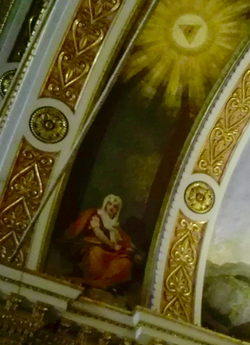
Jael: The Worst Hostess Ever
I almost burst out laughing in the basilica of Montenegro, up high on the ridge overlooking Rapallo & the coast. In the top left corner of the ceiling, overlooking the altar, was none other than Jael, sitting there calm and content as can be, with a wicked sword across her lap and Sisera’s head hanging from her hand. She has taken the time to clean his blood off the sword, change into a lovely bronze dress and pose for the camera. I do hope he’s not dripping on her carpet. Odd that it’s a sword though. In the Biblical story the lethal weapon is her own tent peg. In this fresco she has used his sword against him, stealing it from him as he slept.
This Jael, rather pleased with herself, speaks to me about the winning of battles.
I can’t say I am very comfortable with her and her clean sword and her sweet lies.
Deborah composed an up-beat worship song about it: (Judges 5)
“Most blessed of women be Jael,
the wife of Heber the Kenite,
of tent-dwelling women most blessed.
He asked water and she gave him milk,
she brought him curds in a lordly bowl.
She put her hand to the tent peg
and her right hand to the workmen’s mallet;
she struck Sisera a blow,
she crushed his head,
she shattered and pierced his temple.
He sank, he fell,
he lay still at her feet;
at her feet he sank, he fell;
where he sank, there he fell dead. …
So perish all your enemies, O Lord!
But may your friends be like the sun as it rises in its might.”
This Jael tells me that I do not have to go looking for my enemies, that they will come to me. She tells me that my enemies will make themselves at home in my most intimate spaces, if I invite them in. She tells me to use what I know how to use: my skills at putting people at ease, the tools I know well, yes even to crush if crushing is required. She tells me that no one can tell me who is friend and who is foe, that I am not bound by the agreements of others, not even my husband (Jael’s husband had a peace treaty with Sisera!).
This Jael tells me of the importance of looking good in a crisis – a nice dress and composed face. “Keep calm and carry lipstick.”
This Jael asks me what weapons I can lay my hands on. She asks me who my enemies are and whether I will recognise them as such.
I almost burst out laughing in the basilica of Montenegro, up high on the ridge overlooking Rapallo & the coast. In the top left corner of the ceiling, overlooking the altar, was none other than Jael, sitting there calm and content as can be, with a wicked sword across her lap and Sisera’s head hanging from her hand. She has taken the time to clean his blood off the sword, change into a lovely bronze dress and pose for the camera. I do hope he’s not dripping on her carpet. Odd that it’s a sword though. In the Biblical story the lethal weapon is her own tent peg. In this fresco she has used his sword against him, stealing it from him as he slept.
This Jael, rather pleased with herself, speaks to me about the winning of battles.
I can’t say I am very comfortable with her and her clean sword and her sweet lies.
Deborah composed an up-beat worship song about it: (Judges 5)
“Most blessed of women be Jael,
the wife of Heber the Kenite,
of tent-dwelling women most blessed.
He asked water and she gave him milk,
she brought him curds in a lordly bowl.
She put her hand to the tent peg
and her right hand to the workmen’s mallet;
she struck Sisera a blow,
she crushed his head,
she shattered and pierced his temple.
He sank, he fell,
he lay still at her feet;
at her feet he sank, he fell;
where he sank, there he fell dead. …
So perish all your enemies, O Lord!
But may your friends be like the sun as it rises in its might.”
This Jael tells me that I do not have to go looking for my enemies, that they will come to me. She tells me that my enemies will make themselves at home in my most intimate spaces, if I invite them in. She tells me to use what I know how to use: my skills at putting people at ease, the tools I know well, yes even to crush if crushing is required. She tells me that no one can tell me who is friend and who is foe, that I am not bound by the agreements of others, not even my husband (Jael’s husband had a peace treaty with Sisera!).
This Jael tells me of the importance of looking good in a crisis – a nice dress and composed face. “Keep calm and carry lipstick.”
This Jael asks me what weapons I can lay my hands on. She asks me who my enemies are and whether I will recognise them as such.
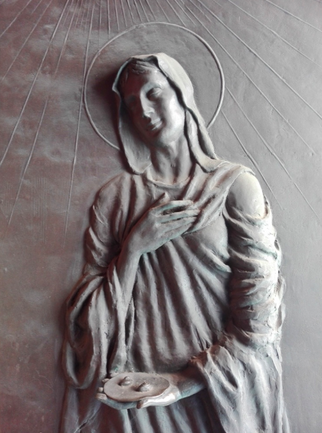
This lovely lady, I think her name is Junice or something, is on the door of the big cathedral in Rapallo. Your guess as good as mine - what is she holding? Is it a widow's mite? Is it something good to eat that she is offering you? They look a bit like Hershey's kisses, but that would be silly.
Point is, she seems so very genuine and sweet in her heart-felt gesture of offering you who enters 'a little something' of value. In Maori: 'Ahakoa he iti, he pounamu' - 'It may be small, but it is greenstone'.
She says 'I don't have much but help yourself, there's one for you and one for me.'
And she stands in this beautiful heavenly glow, she tilts her head, almost closing her eyes, as though she can hear heavenly music.
She is indeed poor - I've just realised that her dress is rough and ripped at the shoulder, no ornaments, nothing pretty, only her soul beauty, expressed in radical generosity.
Point is, she seems so very genuine and sweet in her heart-felt gesture of offering you who enters 'a little something' of value. In Maori: 'Ahakoa he iti, he pounamu' - 'It may be small, but it is greenstone'.
She says 'I don't have much but help yourself, there's one for you and one for me.'
And she stands in this beautiful heavenly glow, she tilts her head, almost closing her eyes, as though she can hear heavenly music.
She is indeed poor - I've just realised that her dress is rough and ripped at the shoulder, no ornaments, nothing pretty, only her soul beauty, expressed in radical generosity.
|
This lovely young lady is standing on the top of a VERY high steep cliff overlooking the Mediterranean, beside the basilica beside the Roman fort overlooking Portofino. She is so graceful, stepping forward toward you, in a flow of movement, reaching out to welcome and embrace, without falling off the rock!
|
|
Juno, Roman goddess, in the Louvre, Parish
|
From one extreme to the other? ... The Queen of Heaven!!
The central church in Rapallo is the ‘Parrocchia’ of Saints Gervasio and Protasio (twin brothers martyred by Emperor Nero). The central figure, raised high above the altar, is the Queen of heaven. A crown of gold is on her head, a royal sceptre held gracefully in her right hand, her left hand reaching down to bless the twins who represent all faithful humanity. She is utterly serene, eyes lowered modestly. She stands on an enormous rock, perfectly balanced. But she is also in motion, stepping forward, turning towards the man below, robe billowing out behind her in a heavenly breeze. My Protestant hackles rise, looking at her. Placed high and gleaming with white and gold she is so obviously a goddess in her own right, so obviously a thin Christian layer placed over the ancient devotion to the female gods who ruled in the pantheon. Jupiter’s wife Juno would seem the obvious deity, queen of the gods, protector of Rome. This Queen Maria, inheritor of the honour due to Queen Juno, is utterly adorable. The statue focuses on her hand, reaching out to bless and protect, fingers spread in active movement. She imparts divine power downward, onto us, onto me. And she is so obviously in charge. She claims the space within this vast church, literally in the spot-light, the high windows surrounding her designed to light her up at any time of day. She is grand, she is majestic, she glows with grace and carries her infinite status with lightness and a gentle touch. This Queen of Heaven embarrasses me. I can hear my Protestant (male!) ancestors in the faith calling her the Whore of Babylon (Revelation 18), tearing down her statues in the feverish cleansing of idolatory. I know my own idolatory, my own desire to be worshiped and adored – ah to be so fabulous, so grace-ful, so well balanced and beautifully flowing. Ah to be the distributor of blessing and protection, the ultimate mother, omniscient, omnipotent. Here is the ultimate ‘non-anxious presence’. Here is the dangerous illusion of succumbing to my own publicity. Everyone must know how wonderful I am! I shudder at it, even as it draws me. Right now I can’t stay to hear what this Queen might have to say to me. As lovely as she is, I turn away. |

A Hong Kong rubbish lady
I was touched by this old lady (and some others like her) who were clearing rubbish from outside shops & offices late into the evening. She was sitting with a huge pile of cardboard boxes, carefully folding them and stacking them into her trolley. Then she pushed the trolley down the street, changing the bags in the public bins.
This is not something that little old ladies do in New Zealand. As I passed her I felt awkward, embarrassed to look her in the eye. She was just focused on her work, didn’t seem to be finding it difficult or painful.
Her dedication and effort, in this most humble of tasks, struck me as such a counterpoint to the vast skyscrapers over our heads, and the shiny shops and streaming crowds … as though in herself she upholds it all. Someone has to take out the trash, or the whole thing comes tumbling down.
She asks of me – how willing am I to take out the trash, to just get on with cleaning up mess not made by me, knowing that there will be more trash tomorrow, and the day after that? Can I work with my own little trolley, not needing any thanks or applause, just getting done what needs to be done, uncomplaining, steadfast?
Is my embarrassment to catch her eye is my own embarrassment with dealing with muck and unpleasantness?
I was touched by this old lady (and some others like her) who were clearing rubbish from outside shops & offices late into the evening. She was sitting with a huge pile of cardboard boxes, carefully folding them and stacking them into her trolley. Then she pushed the trolley down the street, changing the bags in the public bins.
This is not something that little old ladies do in New Zealand. As I passed her I felt awkward, embarrassed to look her in the eye. She was just focused on her work, didn’t seem to be finding it difficult or painful.
Her dedication and effort, in this most humble of tasks, struck me as such a counterpoint to the vast skyscrapers over our heads, and the shiny shops and streaming crowds … as though in herself she upholds it all. Someone has to take out the trash, or the whole thing comes tumbling down.
She asks of me – how willing am I to take out the trash, to just get on with cleaning up mess not made by me, knowing that there will be more trash tomorrow, and the day after that? Can I work with my own little trolley, not needing any thanks or applause, just getting done what needs to be done, uncomplaining, steadfast?
Is my embarrassment to catch her eye is my own embarrassment with dealing with muck and unpleasantness?
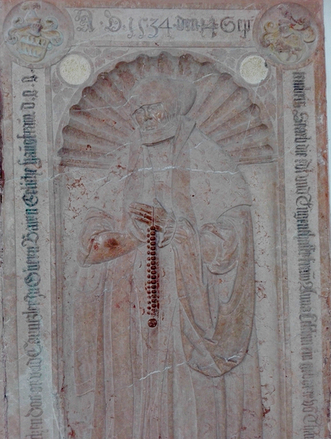
The Freising Mother Superior
This nun was in the hallway with lots of bishops, each carving about a metre tall, lining the cloister. Sorry I didn't catch her name (if any of my German-speaking friends want to have a go from the photo let me know). I liked her because of her sense of calm authority. She is in prayer, obviously in tune with the Lord, but also very much alert, hands held together but open, intent in prayer. I am intrigued that one arm is covered by her robe and the other has the sleeves rolled up, as though ready to wash the dishes.
She of all the figures had been caressed the most, as you can see from the rubbing on her fingers, her arm and her prayer beads.
She speaks to me of the importance of prayer and work, of prayer as work, of holding others in prayer ... as she has enabled countless people to pray even through this tangible image of her.
This stately elderly nun asks me to dedicate myself in prayer, to earnestly seek the presence of the living God. I like her.
This nun was in the hallway with lots of bishops, each carving about a metre tall, lining the cloister. Sorry I didn't catch her name (if any of my German-speaking friends want to have a go from the photo let me know). I liked her because of her sense of calm authority. She is in prayer, obviously in tune with the Lord, but also very much alert, hands held together but open, intent in prayer. I am intrigued that one arm is covered by her robe and the other has the sleeves rolled up, as though ready to wash the dishes.
She of all the figures had been caressed the most, as you can see from the rubbing on her fingers, her arm and her prayer beads.
She speaks to me of the importance of prayer and work, of prayer as work, of holding others in prayer ... as she has enabled countless people to pray even through this tangible image of her.
This stately elderly nun asks me to dedicate myself in prayer, to earnestly seek the presence of the living God. I like her.
